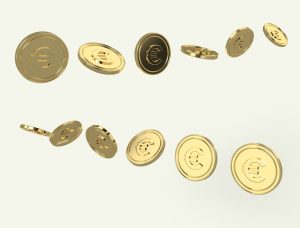Forex deviation levels are an important tool for traders to use when analyzing the market. These levels indicate the degree to which a currency pair’s price has deviated from its average price over a period of time. By understanding how to trade forex deviation levels, traders can identify potential trading opportunities and make more informed trading decisions.
Step 1: Understanding Forex Deviation Levels
Forex deviation levels are calculated using a statistical formula that takes into account the average price of a currency pair over a certain period of time. This average price is then used as a baseline to determine the degree to which the current price has deviated from it. Deviation levels are expressed in terms of standard deviations, which are a measure of the amount of variation or dispersion of a set of data points from its mean.
A deviation level of 1 standard deviation indicates that the current price is within the expected range of prices, while a deviation level of 2 standard deviations or higher indicates that the price is significantly above or below the average and may be due for a correction.
Step 2: Identifying Trading Opportunities
When trading forex deviation levels, traders look for currency pairs that have deviated significantly from their average price. This indicates that the market may be overbought or oversold and that a correction may be due.
For example, if the EUR/USD currency pair has a deviation level of 2 standard deviations or higher, this may indicate that the euro is significantly overbought and that a correction may be due. Traders can then look for opportunities to sell the euro against other currencies, such as the US dollar or Japanese yen.
Step 3: Setting Stop Losses and Take Profits
When trading forex deviation levels, it is important to set stop losses and take profits to limit potential losses and lock in profits. Stop losses should be set at a level that allows for some fluctuation in the market, but also protects against significant losses if the market does not correct.
Take profits should be set at a level that allows for a reasonable profit, but also allows for further gains if the market continues to move in the trader’s favor.
Step 4: Using Technical Indicators
Traders can also use technical indicators to confirm their trading decisions when trading forex deviation levels. For example, if the EUR/USD currency pair has a deviation level of 2 standard deviations or higher and the relative strength index (RSI) is also indicating that the market is overbought, this may provide additional confirmation that a sell trade is warranted.
Step 5: Managing Risk
As with any form of trading, managing risk is essential when trading forex deviation levels. Traders should never risk more than they can afford to lose and should always use proper risk management techniques, such as setting stop losses and taking profits.
In addition, traders should be aware of the potential for false signals when trading forex deviation levels. While a high deviation level may indicate that a correction is due, it is possible that the market may continue to move in the same direction. Traders should always be prepared to adjust their trades if the market does not behave as expected.
Conclusion
Forex deviation levels are an important tool for traders to use when analyzing the market. By understanding how to trade forex deviation levels, traders can identify potential trading opportunities, set appropriate stop losses and take profits, and use technical indicators to confirm their trading decisions. However, traders must also be aware of the potential for false signals and manage risk appropriately to protect against significant losses.





